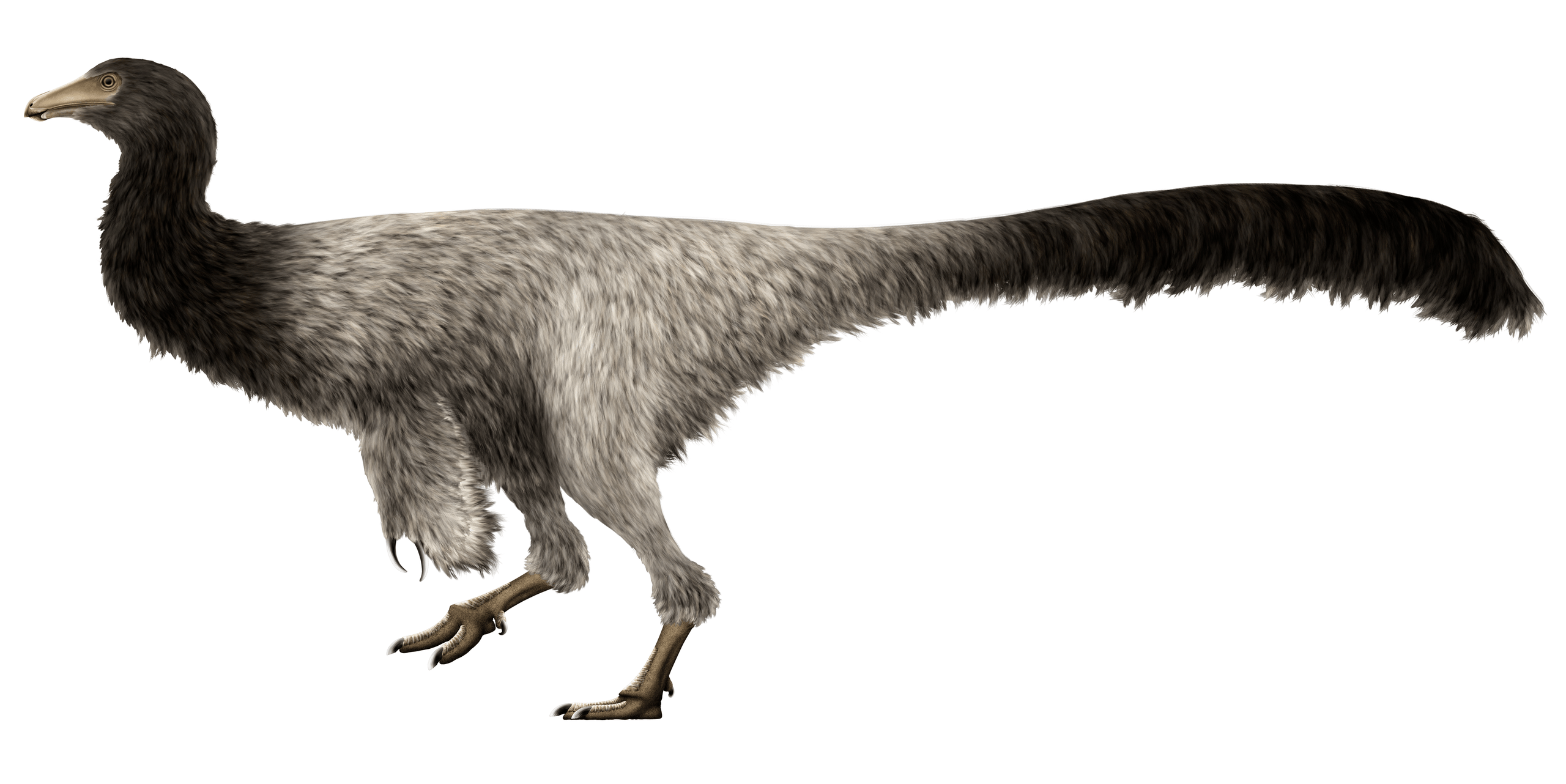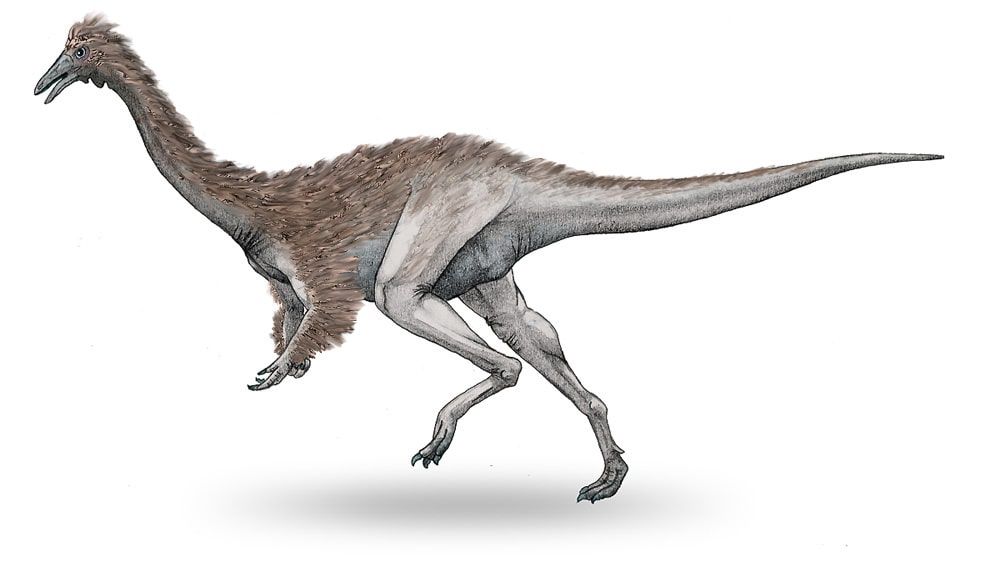
A Garuda, is a large bird-like mythical creature from Hindu and Buddhist mythology.
Brevipes means "short foot".
As far as paleontologists know, only one fossil of Garudimimus brevipes has been discovered. Although it was suspected that some other fossils belonged to this dinosaur, this was not confirmed. Despite the limited number of bones available to us, we have a surprising amount of information about Garudimimus brevipes. This includes both its appearance and a good idea about the life it led.
| Profile | Garudimimus |
|---|---|
| Prehistoric Era | Upper Cretaceous (Coniacium to Santonium) 89.7 to 83.6 million years ago. |
| Order | Saurischia |
| Suborder | Theropoda |
| Family | Maniraptoriformes |
| Tribe | Coelurosauria |
| Genus | Garudimimus |
| Species | Garudimimus brevipes |
| Height | 2 meters |
| Length | 3.5 meters |
| Weight | 100 kg |
| Territory | Mongolei |
Based on some features on the bones of the discovered Garudimimus brevipes, most paleontologists believe that we only have the bones of a juvenile dinosaur, meaning that it had not yet reached its full size. So keep in mind that the information contained here may be somewhat smaller than Garudimimus actually was.
It is believed that the dinosaur was about 3.5 meters long. It had a weight of about 98 kilograms. Some paleontologists have speculated that the dinosaur grew up to 4.2 meters long, but this is pure speculation. The skull was quite small compared to the rest of the body.
If the discovered version of the dinosaur had stood, it would have come to about the shoulder height of an average human.
Garudimumus belongs to a genus of dinosaurs known as ornithomimosaurs, which are theropods.
In 2019, scientists Graham M. Hughes and John A. Finarelli analyzed the olfactory bulb ratio of modern birds and some dinosaur species.
They found that Garudimimus brevipes had a rather poor sense of smell.
Based on the fact that feather imprints were found on Ornithomimus, it is believed that Garudimimus developed shaggy feathering.
Ornithomimus was not really a dinosaur that could move fast. The legs were relatively short, and you ankles were not developed for fast locomotion. The pelvis had shorter ilia than most other dinosaurs at that time. Its leg muscles were not as strongly developed as those of fast-running ornithomimids.
It has a few other features that distinguish it from other dinosaurs in the same group. These include four toes as opposed to three. They had a more rounded snout, and their eyes were larger, perhaps to compensate for their lower smelling ability.

There has been much debate about what Garudimimus brevipes actually ate.
Some paleontologists believe that Garudimimus was an omnivore, meaning that it ate both meat and plant foods. However, it seems that the main consensus at the moment is that the dinosaur was a pure herbivore. Its jaws were toothless and the front parts of the upper and lower jaws were covered by a beak. This beak was developed in such a way that it was good for plucking vegetation.
What we do know is that the dinosaur was cathemeral. This means that it was active both during the day and at night.
It probably slept for a short time, went out and ate, and then returned to its roost to sleep again for a short time.
Garudimimus brevipes was discovered in Mongolia in the Bayan Shireh Formation. It lived during the Late Cretaceous period 89 to 99 million years ago .
While the area where they lived probably did not receive large amounts of rainfall at certain times of the year, there were lakes and rivers that flowed through the area. This helped ensure that the Garudimimus had plenty of vegetation to eat.
The dinosaur would have lived among many turtles and therizionosauria, both of which are herbivores. These also indicate that there was a large amount of vegetation growing in the area.
Image source: Garudimimus_Restoration: By PaleoNeolitic - Own work, CC BY 4.0, https://commons.wikimedia.org/w/index.php?curid=93777894
Size Comparison: By PaleoNeolitic - Own work, CC0, https://commons.wikimedia.org/w/index.php?curid=93666674
Garudimus Skeleton Reconstruction: PaleoNeolitic, CC BY 4.0 https://creativecommons.org/licenses/by/4.0, via Wikimedia Commons
Garudimimus: CC BY-SA 3.0, https://commons.wikimedia.org/w/index.php?curid=1817567